
RUSSIAN JOURNAL OF PLANT PHYSIOLOGY
Scope & Guideline
Advancing Plant Science Through Rigorous Research
Introduction
Aims and Scopes
- Plant Physiological Responses to Stress:
This area encompasses research on how plants respond to various abiotic stresses such as drought, salinity, and temperature extremes, including physiological adaptations and the biochemical mechanisms involved. - Plant Hormonal Regulation:
The journal highlights studies on the role of plant hormones (e.g., auxins, gibberellins, salicylic acid) in regulating growth processes, stress responses, and developmental stages. - Metabolomics and Physiological Profiling:
Research focusing on the metabolic pathways in plants, including the analysis of secondary metabolites, antioxidant systems, and their implications for stress tolerance and plant health. - Genetic and Molecular Studies:
The journal publishes studies on gene expression, transcription factors, and molecular mechanisms that regulate physiological processes and responses to environmental changes. - Ecophysiology:
Research in this domain investigates how physiological traits of plants affect their interactions with the environment and their adaptation strategies in various ecosystems. - Biotechnology and Plant Improvement:
This area covers biotechnological approaches for plant improvement, including genetic engineering, tissue culture, and the use of nanotechnology to enhance plant resilience and productivity.
Trending and Emerging
- Integration of Omics Technologies:
There is an increasing trend towards using genomics, transcriptomics, proteomics, and metabolomics to provide comprehensive insights into plant physiological responses and adaptations. - Sustainable Agriculture and Plant Resilience:
Research focusing on sustainable agricultural practices, including the role of beneficial microbes, biostimulants, and eco-friendly interventions to enhance plant resilience against environmental stresses is gaining traction. - Nanotechnology in Plant Physiology:
The application of nanomaterials for improving plant growth, stress tolerance, and biochemical properties is emerging as a significant area of interest, reflecting broader trends in agricultural innovation. - Climate Change Effects on Plant Physiology:
Studies exploring the impact of climate change on plant physiological processes, including adaptations to shifting environmental conditions, are increasingly prevalent. - Plant-Microbe Interactions:
Research on the interactions between plants and microorganisms, including endophytes and mycorrhizae, is expanding, emphasizing their roles in enhancing plant health and stress tolerance. - Bioinformatics and Computational Biology:
The use of computational tools to analyze plant physiological data and model plant responses to various environmental conditions is an emerging trend, reflecting advancements in data science and technology.
Declining or Waning
- Traditional Agronomy Practices:
Research focusing exclusively on conventional agronomy methods has decreased, likely due to a growing emphasis on sustainable practices and innovative agricultural technologies. - Basic Physiological Studies:
There is a noticeable decline in purely descriptive physiological studies without a clear application or connection to environmental or agricultural challenges, as the field shifts towards more applied research. - Single-Variable Stress Studies:
Studies that examine the effects of a single stressor on plant physiology, without considering multi-stress interactions or ecological contexts, are becoming less common as researchers recognize the complexity of plant responses. - Non-Genomic Plant Responses:
Research that primarily focuses on non-genomic responses (such as immediate physiological changes) without integrating genetic or molecular insights is seeing a decline, as there is a push towards understanding the underlying genetic mechanisms.
Similar Journals

ACTA PHYSIOLOGIAE PLANTARUM
Nurturing a deeper understanding of plant physiology.ACTA PHYSIOLOGIAE PLANTARUM, published by Springer Heidelberg, is a leading journal dedicated to advancing the fields of Agronomy, Plant Science, and Physiology. With an ISSN of 0137-5881 and an E-ISSN of 1861-1664, this esteemed publication has a significant global outreach, being based in Germany. The journal is recognized for its impactful contributions, currently holding a Q2 ranking in both Agronomy and Crop Science, as well as Plant Science, and a Q3 ranking in Physiology according to 2023 category quartiles. Its Scopus rankings reflect its reputable standing within the academic community, with notable placements in Agricultural and Biological Sciences, further highlighting its importance for researchers and professionals in the field. The objective of ACTA PHYSIOLOGIAE PLANTARUM is to foster robust discussions and disseminate innovative studies that enhance our understanding of plant physiology and its applications. Though not an open-access journal, it provides comprehensive access options for readers keen on exploring cutting-edge research that drives advancements in agricultural productivity and sustainability. Through its dedication to excellence, this journal continues to be a vital resource for advancing knowledge and practices in plant sciences.
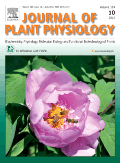
JOURNAL OF PLANT PHYSIOLOGY
Elevating Understanding of Crop ScienceJOURNAL OF PLANT PHYSIOLOGY, published by ELSEVIER GMBH, stands as a leading international journal dedicated to the field of plant physiology, agronomy, and crop science. With an impressive impact factor and recognition within the Q1 and Q2 quartiles across various categories, this journal consistently ranks among the top in its field—positioned at #65/516 in Plant Science and #52/406 in Agronomy and Crop Science as of 2023. Located in Munich, Germany, it serves as a vital platform for researchers, practitioners, and students to share groundbreaking insights and advancements. Although it does not currently offer open access, the journal provides an essential repository of knowledge, publishing significant original research, reviews, and discussions on plant function, regulation, and development, thereby shaping the future of agricultural practices and contributing to our understanding of biophysical processes. Researchers looking to publish in a reputable venue or to access cutting-edge studies will find JOURNAL OF PLANT PHYSIOLOGY an invaluable resource.
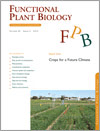
FUNCTIONAL PLANT BIOLOGY
Cultivating Knowledge for Global Agricultural ChallengesFUNCTIONAL PLANT BIOLOGY is a prestigious academic journal published by CSIRO PUBLISHING, specializing in the dynamic fields of Agronomy and Crop Science as well as Plant Science. With an ISSN of 1445-4408 and an E-ISSN of 1445-4416, this journal provides a platform for innovative research that addresses key challenges in plant functional biology, ranging from genetics and physiology to ecological interactions. As evidenced by its impact factor and competitive rankings, including Q1 in Agronomy and Crop Science and Q2 in Plant Science, FUNCTIONAL PLANT BIOLOGY holds a significant place in the scientific community, ranking in the top tiers of Scopus for both categories. The journal supports open access options, ensuring that critical research is widely disseminated and accessible to researchers, professionals, and students around the globe. With a publication history spanning from 2002 to 2024, the journal continues to foster the advancement of plant science, making significant contributions to sustainable agricultural practices and ecological research in Australia and beyond.
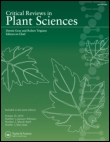
CRITICAL REVIEWS IN PLANT SCIENCES
Connecting global researchers in plant science.CRITICAL REVIEWS IN PLANT SCIENCES, published by Taylor & Francis Inc, is a prestigious journal that has been advancing the field of plant science since its inception in 1983. With an impressive impact factor and consistently ranked in the top quartile (Q1) of its category, this journal is a leading platform for the dissemination of peer-reviewed research that spans the breadth of plant biology, ecology, and agricultural applications. Housed in the United Kingdom, it serves an international readership, making significant contributions to our understanding of plant systems and their environmental interactions. This journal is highly regarded within the Scopus rankings, holding an impressive position of 18 out of 516 journals in the Agriculture and Biological Sciences category, placing it in the 96th percentile. Although not currently open access, the journal provides valuable insights and critical reviews that are essential for researchers, professionals, and students striving to further their knowledge and bolster their own research in plant sciences.

Current Plant Biology
Connecting Researchers in Plant SciencesCurrent Plant Biology is a distinguished peer-reviewed journal published by ELSEVIER, focusing on the dynamic and rapidly evolving field of plant sciences. Since its inception as an Open Access publication in 2014, it has established itself as a leading platform for innovative research, boasting a remarkable Impact Factor that underscores its relevance and contribution to the scientific community. Based in the Netherlands, this journal caters to a diverse audience of researchers, professionals, and students, facilitating the dissemination of key findings in an array of disciplines including biochemistry, genetics, cell biology, and developmental biology. Recognized for its rigorous standards, Current Plant Biology holds a prestigious standing, classified within the Q1 and Q2 quartiles of various Scopus categories, reflecting its impact and reputation in the realms of Plant Science and related fields. The journal is committed to providing accessible and high-quality research outputs that inspire further investigation and collaboration in plant biology.
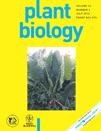
PLANT BIOLOGY
Unveiling the Secrets of Plant EcologyPLANT BIOLOGY is a prestigious academic journal published by Wiley, dedicated to advancing knowledge in the fields of plant science, ecology, and evolutionary biology. With an impressive impact factor and ranking in the Q1 category for Ecology, Evolution, Behavior and Systematics, and Plant Science as of 2023, it stands at the forefront of research dissemination. The journal encompasses a broad scope of plant biology topics, providing a critical platform for researchers to share innovative findings and foster interdisciplinary collaboration. Available in both print (ISSN: 1435-8603) and online formats (E-ISSN: 1438-8677), it ensures accessibility through open access options. As a crucial resource for professionals, researchers, and students alike, PLANT BIOLOGY cultivates a deeper understanding of plant systems and their ecological significance, making it an essential addition to the library of anyone dedicated to the study of biology and the environment.
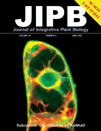
Journal of Integrative Plant Biology
Innovative Research, Global ImpactThe Journal of Integrative Plant Biology, published by WILEY, is a premier academic journal that has been at the forefront of advancing research in plant biology since its inception in 2005. With a notable impact factor and a robust Scopus ranking—positioned at #7 out of 516 in Plant Science and #18 out of 438 in Biochemistry—this journal is recognized as a Q1 journal in multiple categories, including Biochemistry and Plant Science. The journal aims to bridge the gaps between various disciplines in plant research, emphasizing integrative and interdisciplinary approaches to understanding plant biology. With options for open access, the Journal of Integrative Plant Biology ensures broad visibility and impact of research findings, making it an invaluable resource for researchers, professionals, and students looking to stay informed on innovative advancements in the field. Its headquarters are located in the United Kingdom, further amplifying its reach within the global academic community.
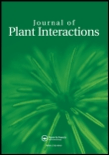
Journal of Plant Interactions
Fostering Knowledge in Plant Ecology and InteractionsThe Journal of Plant Interactions, published by Taylor & Francis Ltd in the United Kingdom, serves as a leading open-access platform dedicated to advancing the understanding of plant interactions and their ecological implications. Established in 2005 and transitioning to open access in 2015, this journal focuses on both fundamental and applied aspects of plant interactions, providing invaluable insights for researchers, professionals, and students within the fields of Ecology and Plant Science. With a commendable impact factor and ranked in the second quartile (Q2) for both Ecology, Evolution, Behavior and Systematics and Plant Science, it reflects the quality and relevance of its published research. Researchers aiming to publish innovative studies on plant behavior and ecosystem dynamics will find a welcoming avenue for their work, as the journal is dedicated to fostering open dialogue and sharing knowledge across disciplines.

JOURNAL OF PLANT RESEARCH
Unlocking the Secrets of Plant Ecology and Agriculture.JOURNAL OF PLANT RESEARCH, published by SPRINGER JAPAN KK, is a leading academic journal that has carved a niche in the field of Plant Science. With its ISSN 0918-9440 and E-ISSN 1618-0860, this journal has been disseminating high-quality research since its inception in 1993 and continues to be essential reading for academics and practitioners alike, aiming to bridge the gap between innovative plant research and practical applications. The journal is highly regarded, holding a prestigious Q1 ranking in Plant Science for 2023, and is positioned in the top 80th percentile within the Scopus rankings for Agricultural and Biological Sciences. The journal's coverage includes a wealth of topics pertinent to advancing our understanding of plant biology, ecology, and sustainable agricultural practices. Although it operates under a subscription model, its influence in the research community remains profound, making it a vital resource for contemporary studies in plant-related disciplines.

BIOLOGIA PLANTARUM
Innovative Research, Rooted in TraditionBIOLOGIA PLANTARUM, esteemed within the realms of horticulture and plant science, is a leading academic journal published by the Academy of Sciences of the Czech Republic, Institute of Experimental Botany. Established in 1959, this journal showcases innovative research and advancements in plant biology, focusing on a spectrum of topics including plant physiology, genetics, and biotechnology. With an impressive Scopus ranking in Horticulture (Rank #41/115) and Plant Science (Rank #221/516), it holds a significant place in the academic community, reflected in its Q2 and Q3 status within its respective categories. Although it is not open access, authors are encouraged to contribute to the growing body of knowledge that supports sustainable practices in agriculture and horticulture. Published in the Netherlands, BIOLOGIA PLANTARUM continues to foster collaboration and dialogue among researchers, professionals, and students dedicated to understanding and advancing plant sciences.